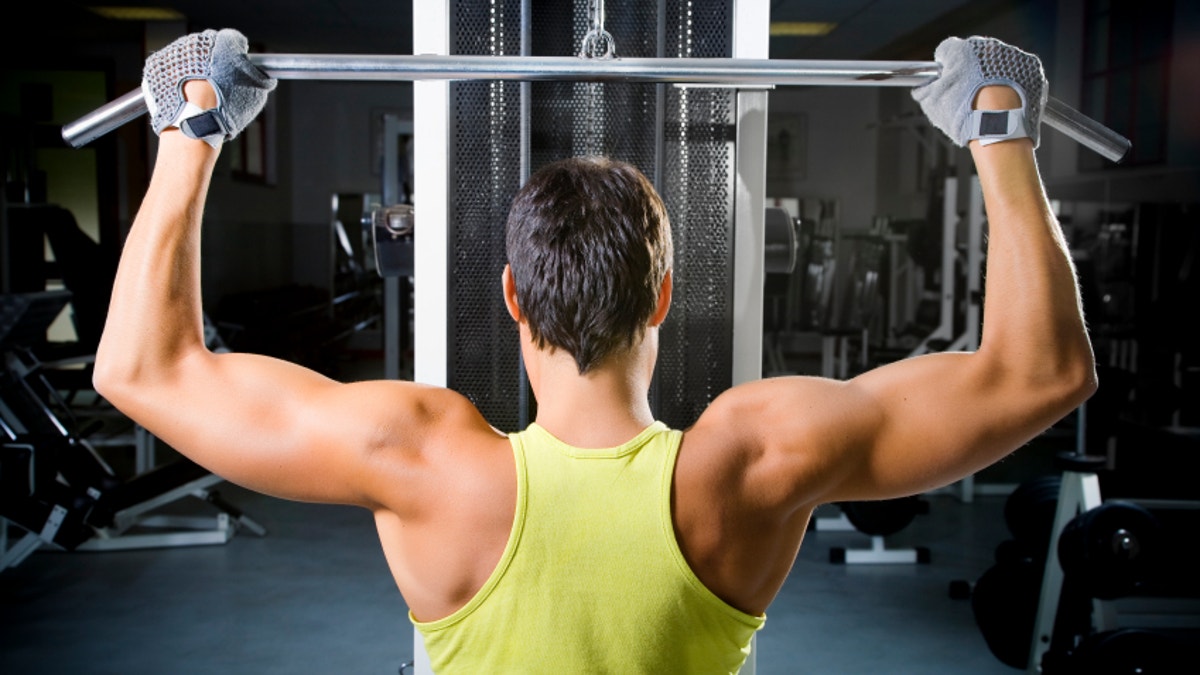
health club: man in a gym doing weight lifting (diego cervo)
Just like the careful balance of flavors used to create the perfect recipe, there are specific elements that make up a superior training session, which, when combined, constitute as close to an ideal workout as possible. These eight principles, as outlined by Geralyn Coopersmith, exercise physiologist and Equinox health advisory board member, and Lisa Wheeler, senior national creative manager for group fitness at Equinox in New York City, can be considered the touchstones of proper training. And when put into practice (all together now!) the result is a time-efficient, total-body power workout.
"It's part of our philosophy in both personal training and group fitness to train for movement mastery," says Wheeler, who designed the series pictured above. "Most of our clients are looking for weight management, performance enhancement, and functional, time-efficient training, and this workout does just that."
DETAILS: 7 Childhood Actors Who Made It Big
Perform the indicated reps of each exercise, demonstrated by New York City-based group fitness instructor Angel Alicea, and then repeat the circuit two to three times depending on your fitness level. Says Wheeler: "Though there's no one perfect workout, this series is pretty darn close, as it is multi-joint and works in every plane."
DETAILS: 14 Healthiest Snack Foods You Can Buy
But before you get started, read the eight elements of the perfect workout:
1. Take Care of Your Tissues. Start your workout with foam rolling, yoga balls, and massage sticks to release trigger points, improve tissue quality and maximize blood flow.
2. Warm-Up Well. Dynamic warm-ups (versus static stretching and/or cardio-only warm-ups) such as toe walks, heel walks, inchworms, and butt kicks better prepare the body for a workout by raising core body temperature, lubricating joints, and preparing the central nervous system for the exercise ahead.
DETAILS: 5 Winter Super Foods to Try Now
3. Turn On Your Core. Doing movements such as planks, quadrupeds and bridges early in your workout (after the warm-up) can help activate your core, which insures good posture and helps protect your back during the workout.
4. Choose Multi-Joint Movements. Incorporate upper and lower body exercises that work more than one joint (for example, dumbbell rows work shoulders as well as elbows while bicep curls work elbows only). Not only are these exercises more time-efficient, they're also more functional because the body rarely moves only one joint at a time.
DETAILS: The Ultimate Weights-Free Workout
5. Move in Every Plane. This targets muscles from every possible angle, creating synergy within the body so you don't develop imbalances that can lead to injury.
6. Pull More Than Push. Most of us need more stretch in the front of our bodies and more strengthening in the back. Doing a 2:1 ratio of pull to push can help improve posture, reduce injuries (particularly to the shoulders), and create a more balanced body.
DETAILS: Foods That Will Make You Look Younger
7. Hit Heavy, Medium, and Light. Designate one day for heavier exercises with fewer reps (eight or less), one for moderate weight exercises for mid-range reps (eight to 12), and one for lightweight exercises with higher reps (12 to 20). Rotating the "rep ranges" helps train different muscles and maximizes overall muscular fitness.
8. Stretch Your Limits. Take time at the end of your workout when muscles are warm and receptive to do some static (slow and sustained) stretches. This will help restore muscles to their optimal length and reduce tension.
This article was created by Q by Equinox for Details.
